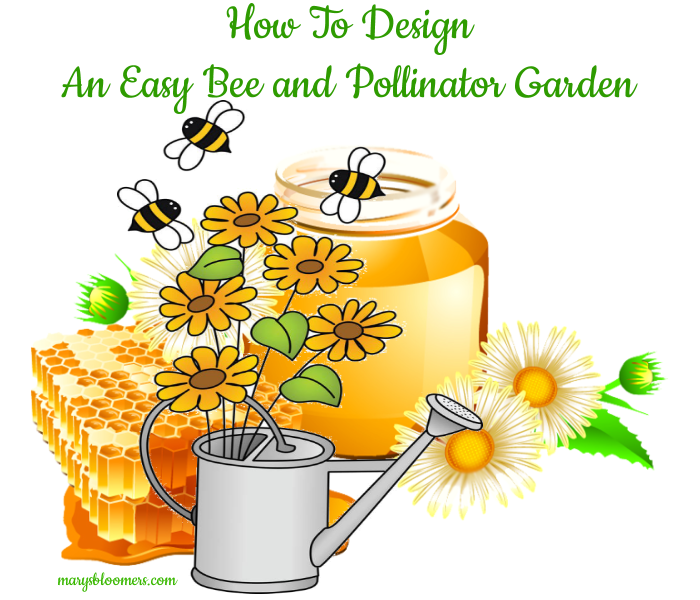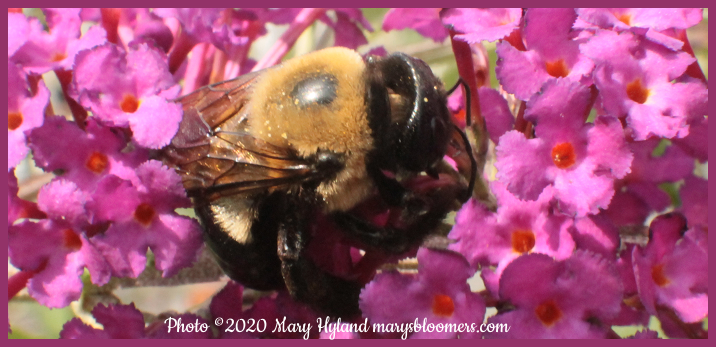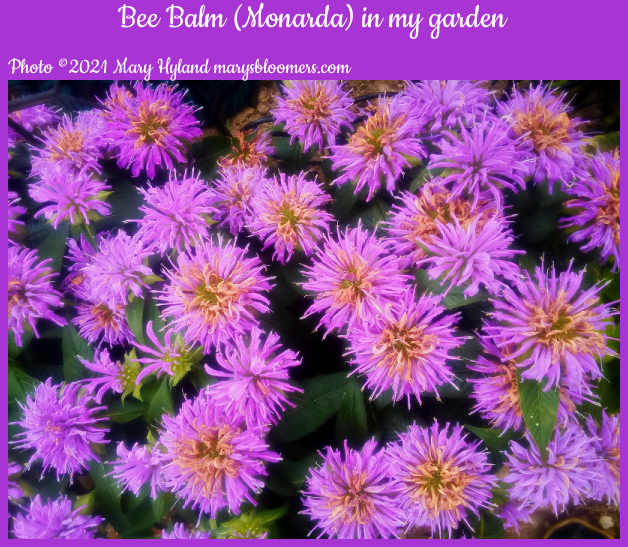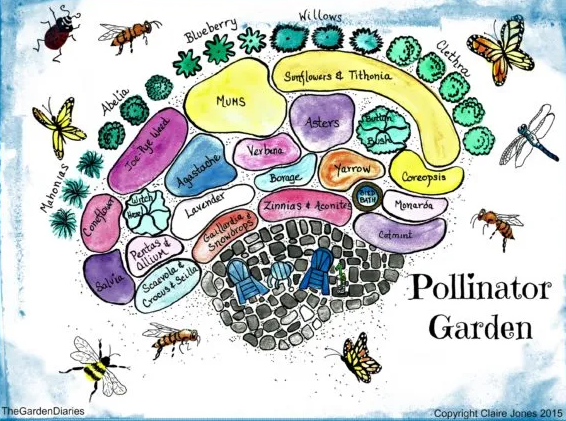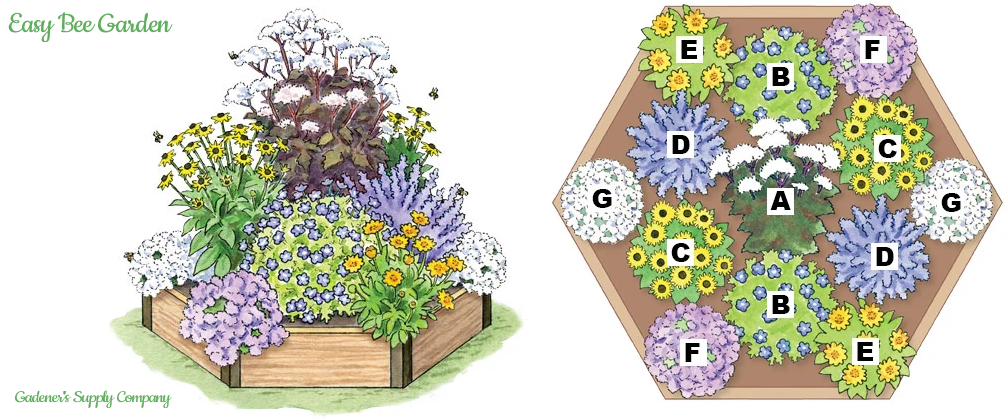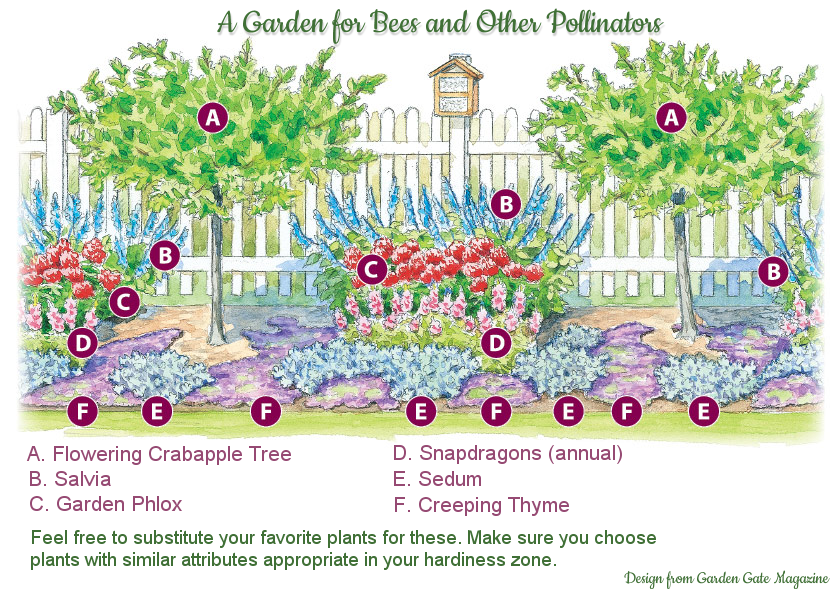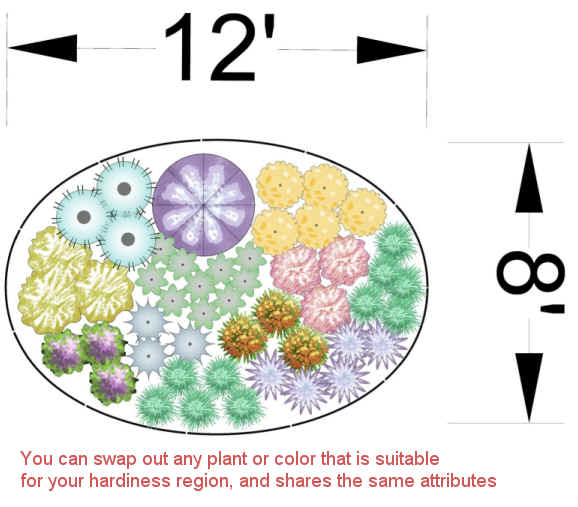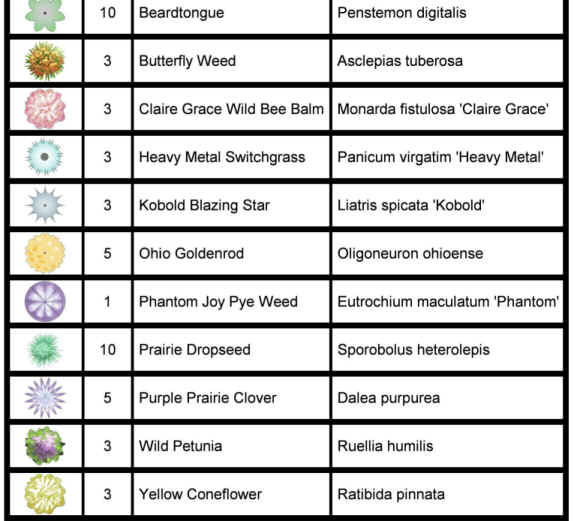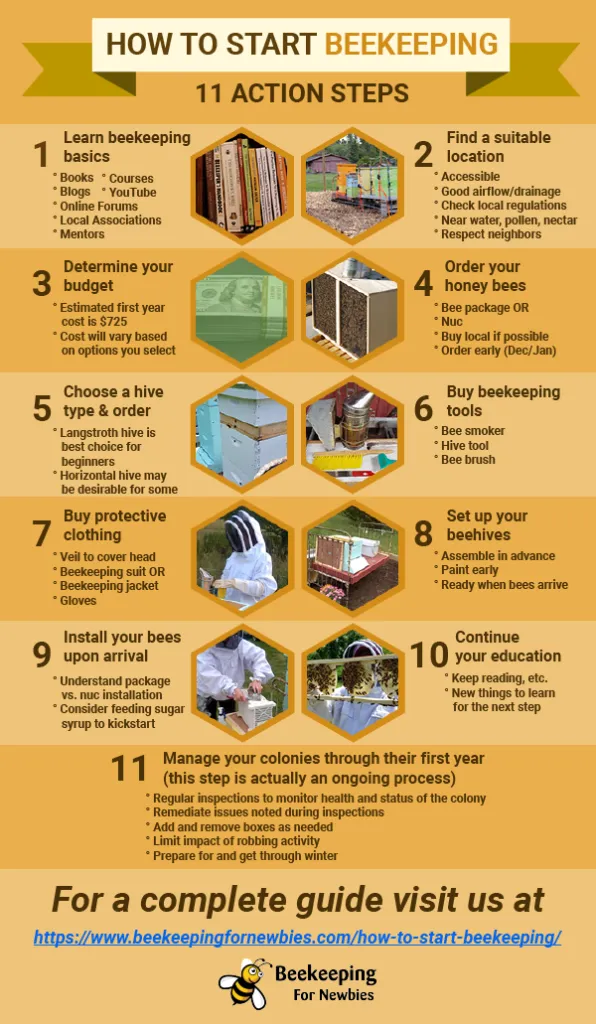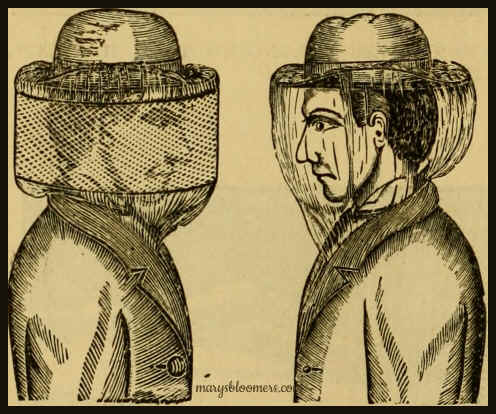|
|
| Layouts for gardens in
Zone 6b Pittsburgh, and many other hardiness zones.
Bee-friendly gardens are fairly easy to grow and maintain. You probably already have the beginnings of one in your landscape's garden design, as well as plants that cater to the needs of other pollinators. If you wish to raise bees and have honey, too, you'll need a quick-start Bee 101. Especially useful will be the information for those who have small-space or urban gardens. Even if all you have is a small terrace or balcony, you can still have a sweet-smelling bee garden. If you also grow vegetables, fruits or flowering ornamentals, you'll want a happy bee pollination. There are several pollinator garden layout designs on this site that you can download free. This page has information specific to helping the honeybees make it through the hive collapse catastrophes, habitat loss, pesticides, diseases and environmental stresses. When i started an urban garden a decade ago, all i had to work with was a blank slate. One dead little tree, lots of grass, and no plants. No honeybees, very few other bees, and not even a handful of butterflies. Birds never visited the empty space. None had any reason to wander into my yard. All that is changed now, and there are several micro-environments, habitats and pollinator gardens. Butterflies are here all day in summer, and i've added a Monarch Garden to help them survive their trips to Mexico in the fall. I am happy to report that my milkweed garden was host to a Monarch I named "Fred" who was tagged by Monarch Watch for tracking his migration south. I dug out every blade of grass by hand and pitchfork, and replaced the water-wasting lawns with landscaping and gardens. Lots of bees work and live here now. Bees and other pollinators love many of the same plants for pollen. The bee below loves my buddleia (Butterfly Bush). Bees love Bee Balm best (Monarda). You can design a garden that focuses on one or all of these types of pollinator gardens, and design it to be productive whatever size you choose. A bird habitat serves several purposes. I like to call the resident birds "accidental pollinators". Even the hummingbirds we love to watch spread the love from plant to plant.
A
little about the bees.....
I learn more about them daily as i garden for the other pollinators. For instance, i was baffled for a while about dead bees and wasps in my birdbaths. When i spotted a butterfly drink and stand on a small stone i had placed in it, to dry it's wings, i figured it out. I no longer put out deep, decorative bowls without ornamentally placing stones or branches partially above water for them to use to climb out after occasionally falling in when they drink. I learned this same lesson about birds taking their baths in the deep bowls, slipping under the water, and not being able to take flight out of the slippery bowls. Most birdbaths are shaped so that all creatures can drink or bathe safely, and climb or fly out, but some are purely ornamental and include fountains, and homemade water features (using deep bowls from your kitchen that are decorative) are too deep for beneficial insects and baby birds without something in it to grasp onto. You don't need to host thousands of bees in your garden or grow hundreds of plants. You don't have to become a beekeeper or harvest honey. A few well-chosen and well-placed plants will do the trick, and will pollinate your entire garden. You don't have to devise an elaborate hive system if you want a little honey. So all of you with small spaces for gardening will benefit from pollination and the aromatherapy. Most gardens for pollinators contain several types of plants that are quite colorful and fragrant. To see photos of my bee and pollinator gardens, click here. To download this page and layouts as a free .pdf format file, click here.
Meet The bees Honeybees are social bees, and the only ones that live in hives and produce harvestable honey. They were introduced to North America from Europe almost 400 years ago. Honeybees are specially effective at pollinating fruits, vegetables and nuts. Native bees are more efficient pollinators than honeybees. They work longer hours, tolerate harsher weather and pollinate a much wider range of flowering plants. In the U.S. there are more than 4000 species of native bees, including bumblebees, mason bees and leafcutter bees. Most species are solitary, but some form colonies. They typically nest and lay their eggs in the ground or in stems and sticks. Other native pollinators include butterflies, moths, beetles, flies, hummingbirds and some species of bats
What Bees Need to Survive The more varied your landscape, the more attractive it will be to pollinators. A yard with layers of trees, shrubs, perennials, annuals and ground covers provides many more shelter and nesting options than a half-acre of lawn. Research the kinds of bees you could attract to the area, or whether you wish to keep honey bees. This will affect the choice of plants. Select flowering shrubs and low maintenance trees and climbers, as well as bulbs, herbs and perennial plants. Do some research into local species, and the kinds of plants they need. This is a great opportunity to provide forage for species that need to revive population numbers. In the Pittsburgh area, that valuable resource is Burgh Bees. I prefer and suggest an easy care garden that attracts any type of bee and pollinator. My goal is pollination and fragrance, so that's the type of design I use. For honey production, i would focus on planting for that goal. Following is a pretty and
long-flowering pollinator garden design from Garden Supply Company.
Herbs for bees and other
Pollinators **Marjoram/Oregano
|
|||||||||||||||||||||||||||||||||||||||||
| Minimize your use of
pesticides. Pesticides can kill beneficial insects along with harmful
ones. Be sure to identify the problem first, so you can use the most
targeted pest-specific remedy. Always follow labeling instructions
carefully and spray at dawn or dusk before bees are active. Avoid
spraying plants that are in full bloom. Avoid using herbicides. When
applied alone or in combination with other chemicals, herbicides can
pose a danger to bees. As with pesticides, always avoid spraying weeds
when they are in bloom.
Raising bees and harvesting honey 'Burgh Bees – Urban Beekeeping At Its BestIf you live in the Pittsburgh, Pa. region, you'll want to visit this site for info and resources. Home gardeners can support or raise bees with their help. Classes available for budding beekeepers. Urban Bee Gardens Gardening for Bees – Seasonal Recommended Plant Lists. University of California.
To see and download an easy butterfly and pollinator garden plan, click here. To see photos of my bee and pollinator gardens, click here.
Design, graphics,
articles and
photos ©2020 marysbloomers.com™
|
